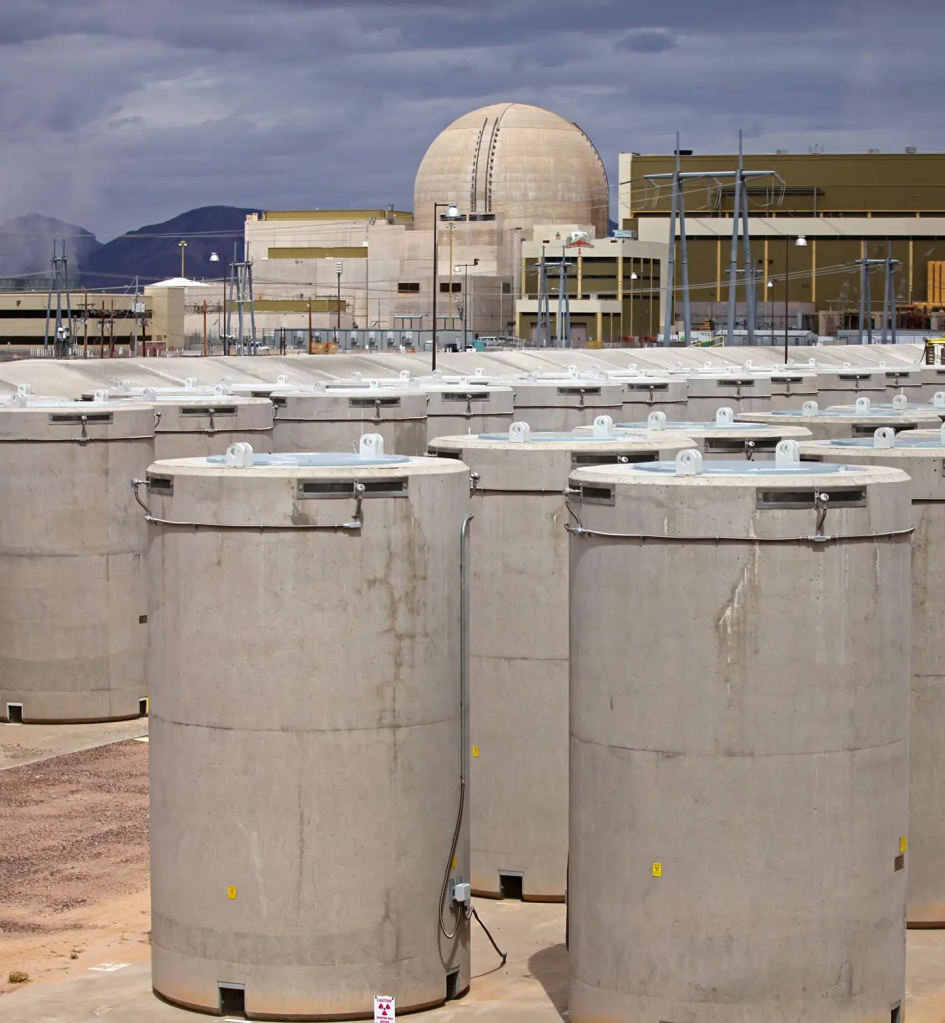One of the main concerns people have over nuclear power is what to do with the fuel after it has spent time in the reactor. This used fuel still emits significant heat for years afterwards, and is highly radioactive for centuries.
Nuclear fuel spends about 6 years inside the reactor. Every 2 years, nuclear power plants shut the unit down and replace 1/3 of the assemblies with new fuel. The spent fuel at this point is still hot enough to require continuous cooling, so it is moved to the spent fuel pool (SFP).

https://www.ans.org/news/article-1579/spent-fuel-pool-fire-risk-goes-to-zero-a-few-months-after-reactor-shutdown/ (coincidentally a good article on SFPs and fires).
SFPs are massive. They are made of several feet of reinforced concrete with stainless steel liners. They contain enough water to cover the fuel at least 20 feet above the assemblies. This ensures there is sufficient water to provide cooling and to shield people from the radiation. As always in nuclear power, this is far more water than the minimum needed. This ensures operators have a lot of time to add more if needed.
SFPs can hold decades worth of used fuel, but were designed with the initial 40 year licenses in mind. Now that plants are operating out to 60 or even 80 years, they need more room. This is where the Independent Spent Fuel Storage Installations come in. ISFSI are where the concrete storage casks go once they are filled with the oldest fuel.
These casks contain no water. Fuel must spend at least 2 yrs in the pool before it has cooled enough to no longer need water cooling. The casks are cooled by the air moving around the containers. The inside is a sealed stainless steel canister filled with helium. This helps with the cooling and gives us a way to monitor pressure to ensure there are no leaks.
The below picture is Palo Verde. It is the largest nuclear plant in the US, located fifty miles west of Phoenix. In the top left corner you can see a rectangle. Each of those cylinders is a spent fuel storage cask. As you can see, there really aren’t that many and they only add a few each year.

By Cuhlik – Own work, Public Domain, https://commons.wikimedia.org/w/index.php?curid=11039169
Below is a closeup of the casks themselves. They are approximately 20 feet tall and 10 feet across. Each cask can hold around 20 assemblies. The casks are designed to handle just about anything that can be thrown at them, including earthquakes, tornadoes, and fires.

So, each nuclear plant in the country has an ISFSI. This means that the spent fuel is kept on site at a little over 50 places across the US. This is a security concern and the United States planned to fix it with a place called Yucca Mountain.

https://www.nrc.gov/waste/spent-fuel-storage/dry-cask-storage.html
Yucca Mountain, located ~100 miles NW of Las Vegas, was the planned deep geologic repository for all of the civilian and government high level nuclear waste. The Nuclear Waste Policy Act of 1982 mandated that such a place be built and Yucca Mountain was chosen in 1987.
Storing nuclear waste always generates a hard NIMBY response and YM was no different. Despite collecting over $32 billion from nuclear plants and spending $12 billion, Yucca Mountain succumbed to the lawsuits and NIMBY politicians during the Obama administration.
As much as I don’t like linking Wikis, whoever did the YM one put in some real effort, so: https://en.wikipedia.org/wiki/Yucca_Mountain_nuclear_waste_repository
So, for the time being, the spent fuel will sit at the individual nuclear sites, waiting for the government to figure it out.
To be clear, the ISFSI at each site are as close to 100% safe as it is possible to be. They are well designed and well guarded. No civilian in the US has ever been harmed by spent fuel in any way.
Here are some more links if you’re curious.
https://www.nrc.gov/waste/spent-fuel-storage/faqs.html
https://www.nrc.gov/reading-rm/doc-collections/fact-sheets/yucca-license-review.html
https://www.nrc.gov/waste/spent-fuel-storage/dry-cask-storage.html
https://www.nrc.gov/waste/spent-fuel-storage/diagram-typical-dry-cask-system.html
Leave a comment